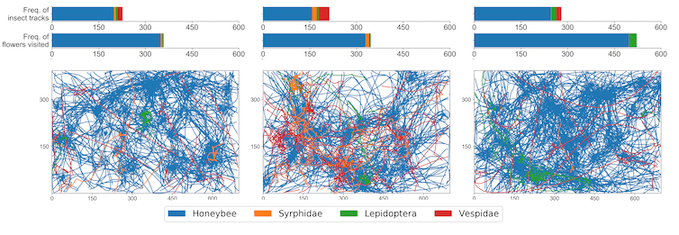Artificial intelligence (AI) offers a new way to track the insect pollinators essential to farming.
In a new study, we installed miniature digital cameras and computers inside a greenhouse at a strawberry farm in Victoria, Australia, to track bees and other insects as they flew from plant to plant pollinating flowers.
Using custom AI software, we analysed several days’ video footage from our system to build a picture of pollination behaviour over a wide area.
In the same way that monitoring roads can help traffic run smoothly, our system promises to make pollination more efficient. This will enable better use of resources and increased food production.
A fresh set of eyes
With a growing human population and limited natural resources, food production needs to become more efficient and sustainable. Precision agriculture powered by new technologies, like AI, can help secure future food production.
Efficient pollination is crucial to produce healthy fruits, vegetables, legumes and nuts.
Optimal pollination requires just the right number of insect pollinator visits to flowers. Too few or too many visits, or visits by ineffective insect pollinators, can diminish the quality of food a flowering plant produces.
Typical techniques for monitoring insect pollination use direct visual observation or pan trapping, which are labour-intensive and take many days.
Additionally, without a very large number of trained observers it is impossible to collect simultaneous data across large farms. Yet such data are needed to provide time-critical evidence of the extent of crop pollination, before a season’s pollination window is closed.
With our digital system, however, a farm manager could obtain same-day data on crop pollination levels.
Mots-clés : cybersécurité, sécurité informatique, protection des données, menaces cybernétiques, veille cyber, analyse de vulnérabilités, sécurité des réseaux, cyberattaques, conformité RGPD, NIS2, DORA, PCIDSS, DEVSECOPS, eSANTE, intelligence artificielle, IA en cybersécurité, apprentissage automatique, deep learning, algorithmes de sécurité, détection des anomalies, systèmes intelligents, automatisation de la sécurité, IA pour la prévention des cyberattaques.






